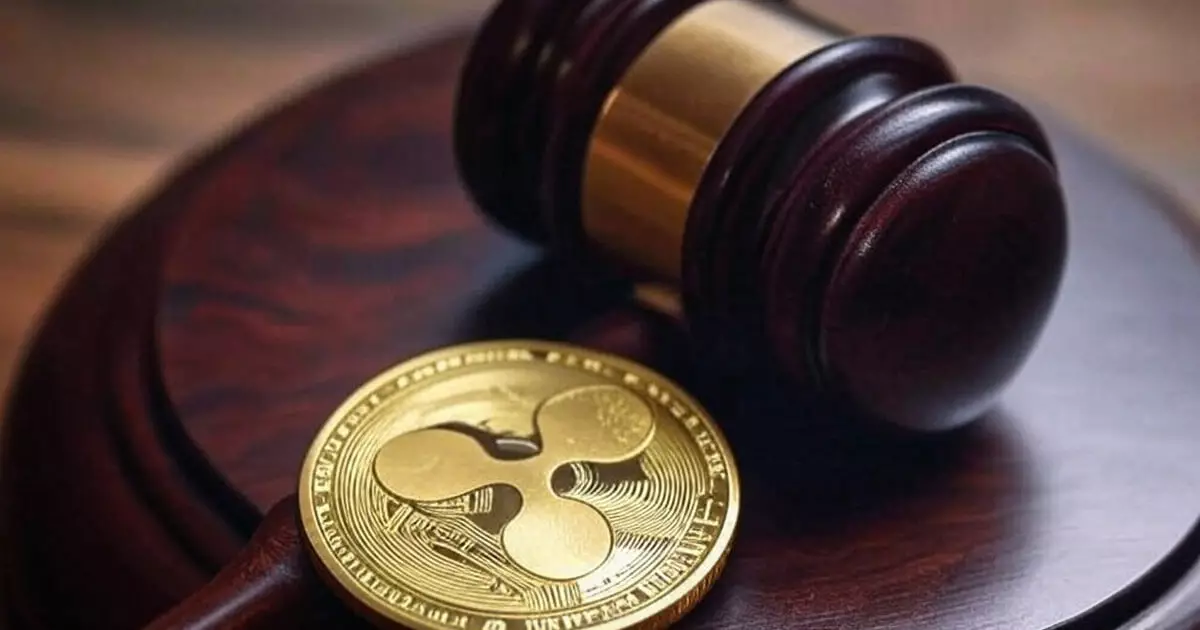In what could be seen as a pivotal moment in the ongoing saga between Ripple Labs and the U.S. Securities and Exchange Commission (SEC), a proposed settlement has emerged that could shift the tectonic plates of the cryptocurrency landscape. The tentative agreement filed on May 8 marks an effort to resolve a civil enforcement action that has spanned several years, directly implicating Ripple’s CEO, Brad Garlinghouse, and Executive Chairman, Chris Larsen. The settlement proposes Ripple pay $50 million, releasing the remaining $75 million held in escrow back to the company. But is this down payment really a resolution, or merely a Band-Aid over a festering wound?
The SEC underscores that this settlement doesn’t reflect any judgment on the core issues of the case but serves as evidence of a broader regulatory recalibration towards the entire cryptocurrency sector. One could argue, however, that framing such a move as a victory is misleading. Given the scrutiny and extensive litigation surrounding Ripple, the resolution may more accurately reflect a capitulation than an affirmation of wrongdoing or vindication.
The Legal Dance: Steps to Settlement
The road to this proposed settlement is anything but straightforward. Attorney James Filan noted that further steps remain, with Judge Analisa Torres needing to provide an indicative ruling that could dissolve the injunction tied to the case. It’s crucial to understand that legal strategies often resemble an elaborate dance, with both parties moving in tentative rhythm but, in this instance, the choreography leads us to question the motivations behind these conciliatory gestures.
The SEC’s recent push for a settlement can be interpreted as a recognition that the legal landscape is changing faster than their bureaucratic apparatus can keep pace. The crypto market continues to evolve, and the SEC is left grappling to provide coherent regulation while preserving its authority. The irony is that the pending dissolution of the injunction may not actually clear much air, as unresolved issues still linger over the definitions of securities and transactions.
Apex of Legal Conflict
When the SEC initially launched its legal assault in December 2020, accusing Ripple of conducting unregistered securities offerings, the cryptocurrency world took notice. This wasn’t merely a clash of a corporation and a regulatory body; it became a high-profile narrative with far-reaching implications. With questions swirling around the classification of digital assets, Ripple’s case ushered in a new era of litigation that would set precedents—at least in theory.
Fast-forward to the present, and it’s evident that this case has transformed into a proxy war for something far larger: the control and regulation of cryptocurrency markets. The SEC’s assertion that Garlinghouse and Larsen aided and abetted these alleged violations raises valid concerns about individual accountability in the decentralized arena, but labeling them as outright criminals could be an overreach. The fundamental legal questions remain unanswered, and any indication that this settlement could quell further disputes is optimistic at best.
The Broader Implications for Cryptocurrency Regulation
The proposed resolution, signaling the end of Ripple’s lengthy legal battle, carries broader implications for the future of cryptocurrency regulation. The SEC’s decision to pursue this settlement rather than pressing the full extent of its legal powers could be indicative of a larger trend in the crypto regulatory landscape—one that might encourage more companies to engage in light-hearted legislative negotiations rather than fear of impending litigation.
The settlement, in essence, is an acknowledgment of the SEC’s current enforcement priorities but also exemplifies a failure to develop a coherent framework for regulating cryptocurrencies. This has the potential to breed further controversy and uncertainty as the crypto space continues to innovate. It raises a perplexing but vital question for that community: Are we heading into an era of accommodation where serpentine pathways to regulation replace substantive, clear-cut laws?
Little remains clear except the fact that Ripple’s saga has ignited discussions about accountability, securities classification, and the balance between innovation and regulation. The implications, while promising immediate resolution, may ultimately lead us back to square one, wrestling with the ongoing tug-of-war between regulatory authorities and a rapidly expanding industry. The $50 million settlement is merely a momentary reprieve—an uneasy truce in an ever-evolving battlefield.


Leave a Reply